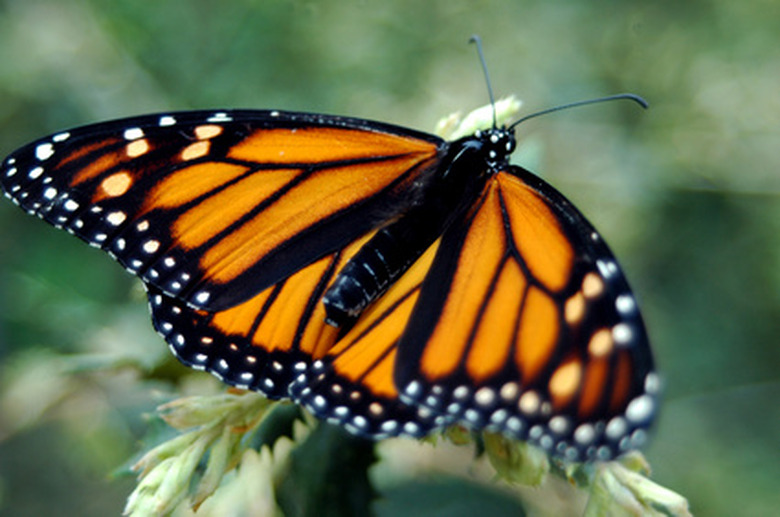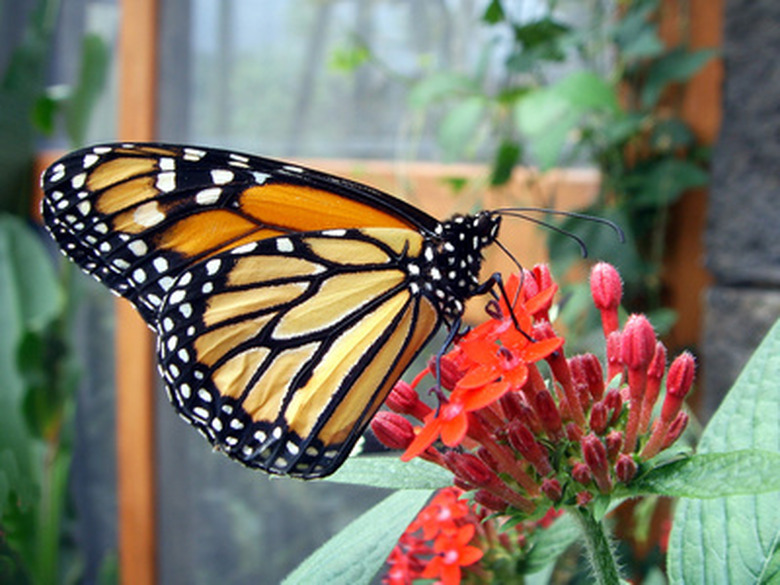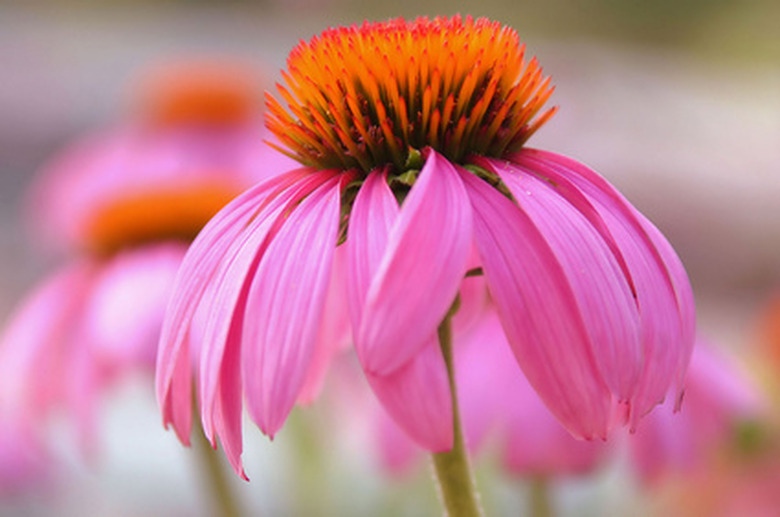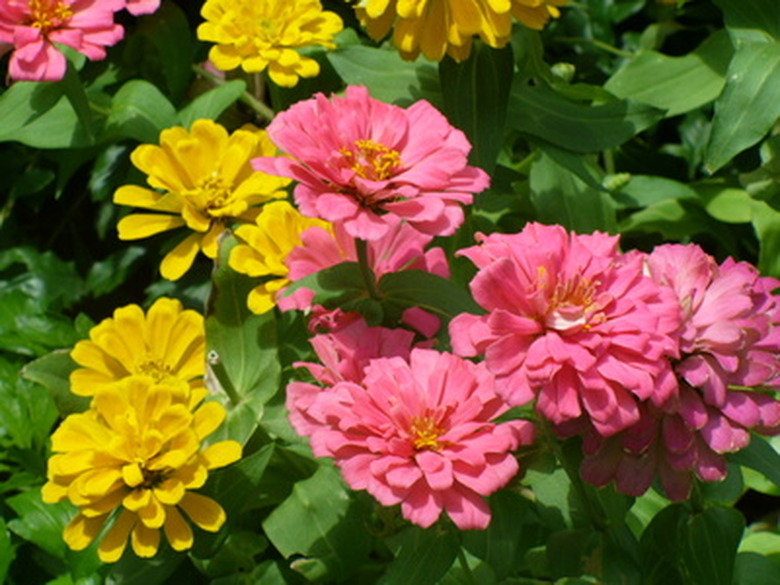What Flowers Attract Monarch Butterflies?
Monarch butterflies (Danaus plexippus) are vividly colored and fascinating to watch. Their presence greatly enhances the natural environment of a garden. Unfortunately monarch butterfly numbers have been declining over the years. One reason is habitat destruction. Another factor is the use of pesticides and herbicides. These chemicals can kill the butterflies and their host and nectar plants. By avoiding the use of pesticides and herbicides as well as providing milkweed plants to host the butterflies and nectar plants to feed them, we can do our part in aiding their survival.
- Monarch butterflies (Danaus plexippus) are vividly colored and fascinating to watch.
- These chemicals can kill the butterflies and their host and nectar plants.
Host Flowers for Monarch Butterflies
Monarch butterflies have one particular species of flower on which they lay their eggs and feed their offspring: milkweed. Milkweed plants are members of the Asclepiadaceae family and are the host plant of monarchs. The plant and the monarch butterfly have a symbiotic relationship. The milkweed is the single plant on which the monarch lays its eggs. Larvae then emerge from these eggs and eat only the milkweed. The toxin from the milkweed accumulates in the body of the growing butterfly, making it lethal to many of its predators. In turn, however, the butterfly carries pollen from one milkweed to the next as it feeds on the nectar, assisting the plant in its reproduction. One popular milkweed plant favored by monarchs is the scarlet milkweed (Asclepias curassavica)–sometimes referred to as the bloodflower. Monarchs also enjoy the swamp milkweed (Asclepias incarnata) and butterfly flower (Asclepias tuberosa).
- Monarch butterflies have one particular species of flower on which they lay their eggs and feed their offspring: milkweed.
- One popular milkweed plant favored by monarchs is the scarlet milkweed (Asclepias curassavica)–sometimes referred to as the bloodflower.
Perennial Nectar Flowers for Monarch Butterflies
Bee balm (Monarda), an attractive plant to the monarch, is usually grown in herb and cottage gardens. Another favorite is the scarlet bee balm (Monarda didyma). Two other bee balms suitable for providing butterfly nectar are wild bergamot (Monarda fistulosa) and spotted bee balm (Monarda punctata). The purple coneflower (Echinacea purpurea) is a popular choice for both monarchs and gardeners, and so is the black-eyed Susan (Rudbeckia). A spiky purple perennial called gayfeather (Liatris spicata) will attract many species of butterfly, including the monarch. The spring flowering primrose (Primula) is a good choice for an early nectar plant, while yarrow (Achillea millefolium) blooms throughout the summer. Keep in mind that some important nectar producing perennials are considered weeds, like aster, thistle, goldenrod and dandelion, and are routinely mowed or sprayed. Knowing how important nectar flowers are to the monarch's survival, gardeners might try to view these roadside plants a bit more favorably.
- Bee balm (Monarda), an attractive plant to the monarch, is usually grown in herb and cottage gardens.
- The spring flowering primrose (Primula) is a good choice for an early nectar plant, while yarrow (Achillea millefolium) blooms throughout the summer.
Annual Nectar Flowers for Monarch Butterflies
The marigold is a common summer bedding flower that not only provides nectar for monarchs, but also repels undesirable insects from the garden. Butterflies favor zinnias, which are also good cutting flowers. Zinnias can be planted in prepared soil, such as that of a vegetable garden. Sweet alyssum (Lobularia maritima) is a fragrant flowering groundcover. The tiny white, pink or purple blooms exude a sweet fragrance all summer long. Though alyssum is an annual, it will often return from seed. One of the easiest butterfly annuals to grow is cosmos (Cosmos bipinnatus). These tall, bright flowers will bloom throughout the summer.
- The marigold is a common summer bedding flower that not only provides nectar for monarchs, but also repels undesirable insects from the garden.



